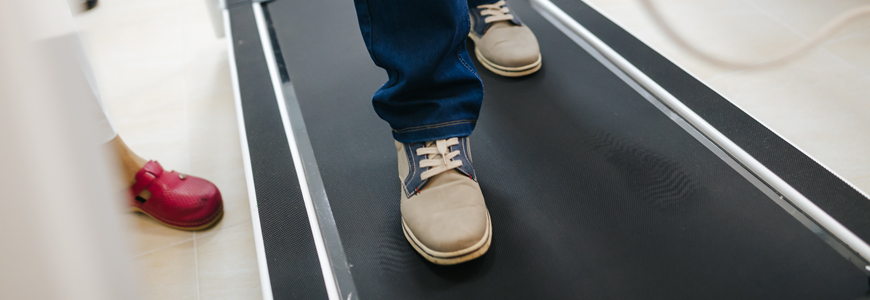A structured walking program that has demonstrated effectiveness for patients with peripheral artery disease (PAD) has been incorporated at Duke Health as part of the Duke Cardiopulmonary Rehabilitation program at Croasdaile.
The three-month Supervised Exercise Therapy (SET) program, which is covered by Medicare, creates a framework for patients to participate in 36 morning sessions during a 12-week period. The program was launched in 2020, but full implementation was delayed by COVID.
Following the pandemic, the SET program has grown steadily and is receiving more attention with referring providers in the region. Referrals must come from a vascular specialist or cardiologist.
To refer a patient to Duke Cardiopulmonary Rehabilitation at Croasdaile, call 919-660-6673.
Old therapy, new structure
Interventional cardiologists have long encouraged walking as a therapy for patients with PAD. Clinical research has demonstrated that structured walking is more effective than simply encouraging patients to walk independently, says Duke PAD specialist William Schuyler Jones, MD, an interventional cardiologist.
“We’ve known for decades that structured walking helps patients with PAD reduce their symptoms,” Jones says. “But until recently, we had no way to formalize that therapy and create the administrative support to offer it in an effective setting.”
An important step toward formalizing the therapy and securing federal reimbursement took place in 2015 when Duke cardiologists presented the concept to an evidence development committee of the Centers for Medicare and Medicaid Services (CMS).
Manesh R. Patel, MD, chief of the Duke Division of Cardiology and Division of Clinical Pharmacology, worked with Jones to develop the CMS committee presentation. Other advocates included the American Heart Association, American College of Cardiology, and the Society of Vascular Surgery.
“Our research has shown that supervised exercise is more effective than just walking at home,” Schuyler says. The duration of the program and scheduled walking times is an important part of the therapy, he says. “We are enjoying growth this year and are improving outreach to regional providers who also see benefits for their patients,” Jones adds.
